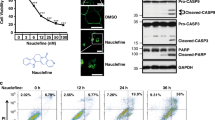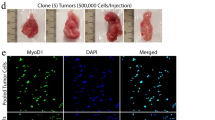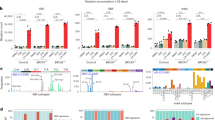Abstract
Revertant cells, which can be isolated from transformed cells, are flat, non-transformed variants that have contributed to the elucidation of mechanisms involved in cell transformation. We have discovered that a novel styryl diphenylamine derivative converts human fibrosarcoma HT1080 cells into revertant cells. This compound induces flat cell morphology and causes a decrease in proliferative rate. The flat revertant cells not only exhibit a reduction in saturation density at confluence, but also lose the ability to proliferate in soft agar. Furthermore, their tumorigenicity is reduced when injected s.c. into athymic nude mice. The compound alters morphology in three out of seven cancer cell lines and has a potent growth inhibitory effect in six of these lines. In contrast, it has only low levels of cytotoxicity for three normal diploid cell lines. These findings indicate that this styryl diphenylamine derivative has the potential to suppress the malignant phenotype of cancer cells without profound cytotoxicity in non-transformed cells.
This is a preview of subscription content, access via your institution
Access options
Subscribe to this journal
Receive 24 print issues and online access
$259.00 per year
only $10.79 per issue
Buy this article
- Purchase on Springer Link
- Instant access to full article PDF
Prices may be subject to local taxes which are calculated during checkout
Similar content being viewed by others
Author information
Authors and Affiliations
Rights and permissions
About this article
Cite this article
Ohizumi, I., Tanemura, M. & Kaihoh, S. A novel styryl diphenylamine derivative reverts the transformed phenotype of human fibrosarcoma HT1080 cells. Br J Cancer 72, 1219–1223 (1995). https://doi.org/10.1038/bjc.1995.489
Issue Date:
DOI: https://doi.org/10.1038/bjc.1995.489



